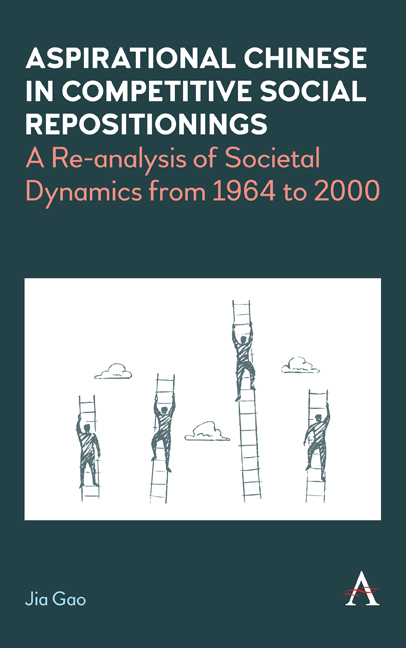 Aspirational Chinese in Competitive Social Repositionings
Aspirational Chinese in Competitive Social Repositionings Book contents
- Frontmatter
- Contents
- List of Abbreviations
- List of Figures
- List of Tables
- Preface and Acknowledgements
- One The Absence of Everyday Chinese in the Dichotomous Paradigm
- Two Rebranding the Communist Heir Narrative and the Cultural Revolution
- Three Tearing the Utopian Veil Down By the Sent-Down Youth
- Four Crying Out for Changes in the Second Half of the 1970s
- Five Battling for the Advantages Under the Dengist Political Alliances
- Six Climbing Different Social Ladders From the Mid-1980s
- Seven Filling in the Post-1989 Vacuum Left By Educated Liberals
- Eight Seizing Chances to Be Entrepreneurial in Post-1992 China
- Nine Towards a Theory of Competitive Social Repositioning
- References
- Index
Eight - Seizing Chances to Be Entrepreneurial in Post-1992 China
Published online by Cambridge University Press: 28 February 2024
- Frontmatter
- Contents
- List of Abbreviations
- List of Figures
- List of Tables
- Preface and Acknowledgements
- One The Absence of Everyday Chinese in the Dichotomous Paradigm
- Two Rebranding the Communist Heir Narrative and the Cultural Revolution
- Three Tearing the Utopian Veil Down By the Sent-Down Youth
- Four Crying Out for Changes in the Second Half of the 1970s
- Five Battling for the Advantages Under the Dengist Political Alliances
- Six Climbing Different Social Ladders From the Mid-1980s
- Seven Filling in the Post-1989 Vacuum Left By Educated Liberals
- Eight Seizing Chances to Be Entrepreneurial in Post-1992 China
- Nine Towards a Theory of Competitive Social Repositioning
- References
- Index
Summary
This chapter is a continuation of the discussion initiated in Chapter seven, which focused largely on the post-1989 and post-1992 years. The primary focus of this chapter is the second half of the 1990s, although it must be recognised that Chinese society in the 1990s was driven by at least two strong conflicting socio-political forces represented by the post-1989 crackdown and the post-1992 economic liberalisation and their constant tension. This situation could well be envisaged as being overseen by a person holding both the carrot and the stick, in a manner similar to what is known as Deng Xiaoping's ‘two-hands approach’ (liangshou zhua). The aim was, on the one hand, to encourage people to actively engage in more economic activities, while on the other hand tightly controlling ‘all kinds of ideological and cultural pollutants from abroad’ (Kim 2006, 279). There were two boundary lines between what was expected and what was not tolerated. Such socio-political conditions also shaped people's behaviours, making people more individualistic and utilitarian. The natural human tendency to seek advantage and avoid disadvantage not only propelled more people to make new efforts to reposition themselves but also altered the patterns and characteristics of their social repositioning.
Of course, as noted previously, it is critical to remember that the 1989 Tiananmen protest had almost no direct impact on China's rural population, although it has been praised by many activists for promoting democracy in the country. In the post-1989 years, rural residents were still a significant cohort, forming over 74 per cent of the total population (see Figure 1.2). It was at almost the same time that China's rural industrialisation entered its second stage, offering tens, if not hundreds, of millions of rural citizens employment in TVEs. This not only effectively transferred rural surplus labour from the agricultural sector to industrial and service sectors, but also popularised Deng's idea of ‘letting some people get rich first’ among peasants. The success of rural industrialisation also inspired the state to utilise what it had learned from the early steps of the rural industrialisation in the restructuring of less efficient SOEs, putting new owners and managers of enterprises in a more advantaged position while making many urban workers jobless.
- Type
- Chapter
- Information
- Aspirational Chinese in Competitive Social RepositioningsA Re-Analysis of Societal Dynamics from 1964 to 2000, pp. 165 - 190Publisher: Anthem PressPrint publication year: 2023
